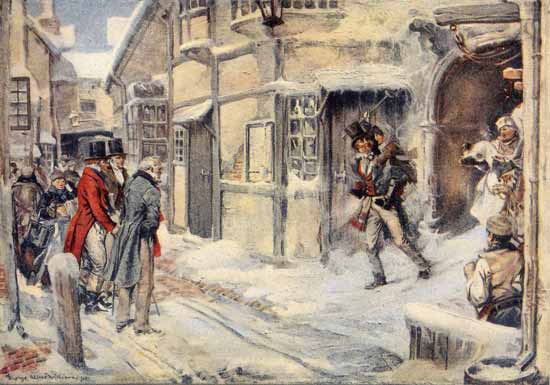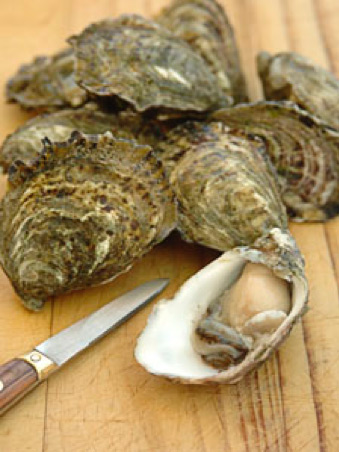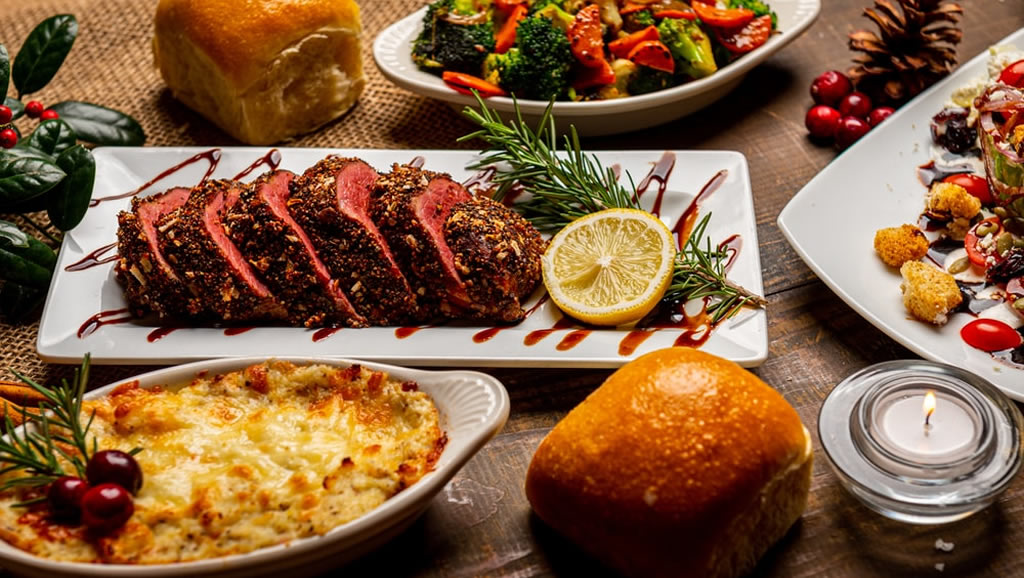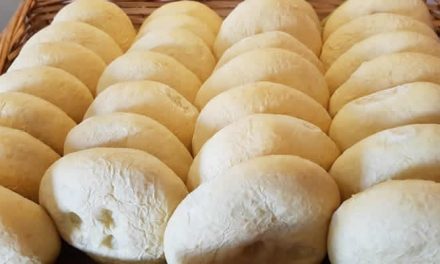Charles Dickens was a serious food lover. His literature introduced a festive menu that has barely changed since the Cratchits gathered round their table in “A Christmas Carol”. So whilst he may not have “invented” these dishes he certainly helped popularise and even “standardise” much of the Christmas fayre we enjoy today.

Possible reasons for Dicken’s love of food and Christmas as a family event lies in his impoverished childhood when food was no doubt in short supply
Possible reasons for Dicken’s love of food and Christmas as a family event lies in his impoverished childhood when food was no doubt in short supply. When Charles Dickens was 12, his father was imprisoned for debt and while the rest of the family went to live with him in prison, Charles was sent to work in a blacking factory where he had to manage his tiny wages to buy penny buns and bread to eat.
In his writing, his characters’ attitude to food often gives us clues to their morality. Fat adults often starve thin children; characters who share and enjoy lavish feasts are good, characters who make lavish food just for show or who waste food are generally bad. Think Miss Havisham’s wedding cake.
In his real life Dickens was famous for his generous dinner parties; his wife Catherine even published a little book of recipes to suit all budgets.
A Template for Christmas Celebration
 In 1843, Dickens published A Christmas Carol, which contained the famous scene of the Cratchits contentedly gathered round the crackling fire with their goose, apples and oranges, chestnuts and the “speckled cannon ball” pudding.
In 1843, Dickens published A Christmas Carol, which contained the famous scene of the Cratchits contentedly gathered round the crackling fire with their goose, apples and oranges, chestnuts and the “speckled cannon ball” pudding.
With his emphasis on a family gathering, Dickens set the template for today’s Christmas celebrations. Until the publication of a Christmas Carol, Christmas pudding was known only as plum pudding – but after that, plum pudding was afterwards always referred to as Christmas pudding.
An Alternate Christmas Dish?
In Dicken’s novel “Little Dorrit” the character John Chivery is rewarded for running “mysterious missions” with a banquet, for which Miss Rugg “with her own hands stuffed a leg of mutton with oysters.”
So, with Charles Dickens established as a “serious foodie ” why don’t you try out his recipe for Leg of mutton stuffed with oysters – maybe even as an alternate Christmas dish ?
Dickens’ Leg of Mutton Stuffed with Oysters
 SERVES 6-8
SERVES 6-8
Ingredients
- 2 tablespoons freshly chopped flat-leaf parsley
- 1 dessertspoon freshly chopped thyme leaves
- 1 dessertspoon freshly chopped savoury
- 2 hard-boiled egg yolks
- 6 oysters, cleaned, shucked, and chopped, reserving the liquor, or 6 finely chopped anchovies
- 3 garlic cloves, minced (I think garlic is better than onion in this dish, but if you prefer to follow Catherine, use one very finely chopped shallot)
- leg of mutton (or lamb if you cannot find mutton), approx. 5½-6¾ lb/2.5-3kg
- 2 teaspoons all-purpose/plain flour
- 1¼ cups/300ml lamb or chicken stock
Preparation
- Preheat the oven to 425°F/220°C/Gas 7.
- Chop the herbs as finely as possible – a meat cleaver is useful for this. Bind them together with the egg yolks, oysters (or anchovies), and garlic (or shallot).
- Using a sharp knife, make about 6 indentations in the fleshy part of the leg of mutton (or lamb) and push in the mixture. If you make the indentations at a slight angle, you can pull the fat back over the cut.
- Place the meat in a roasting pan and roast in the preheated oven for about 30 minutes, then turn the oven down to 325°F/160°C/Gas 3. Baste the joint with the fat and juices in the pan and continue roasting for 15-20 minutes per 1 lb/450g.
- When the meat is done, remove it from the oven, cover with foil, and let it rest for 15-20 minutes.
- Make the gravy by mixing the flour with the fat in the roasting dish over a low heat, and slowly adding the stock and the oyster liquor. Skim the fat off the gravy (putting it in the freezer helps it coagulate on the top) and serve as it is, or add to the Piquant Sauce ingredients (see below)
PIQUANT SAUCE
- 1 shallot, finely chopped
- a little oil
- 1 tablespoon finely chopped gherkins
- 1 tablespoon finely chopped capers
- 4 tablespoons good red wine vinegar
- 1 anchovy fillet, pounded
- Sweat the shallot in the oil until it softens, then add the gherkins, capers, and vinegar. Simmer for 4 minutes.
- Make gravy from the joint, add the oyster liquor (to make about 1¼ cups/300ml), the shallot mixture, and the pounded anchovy. Simmer for a few minutes before serving in a gravy boat.





